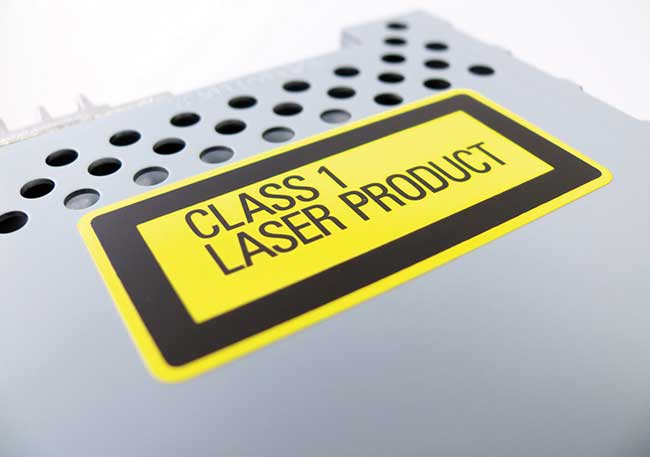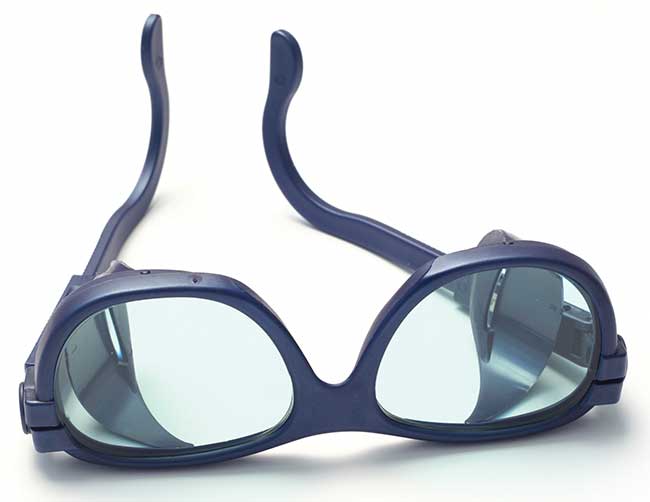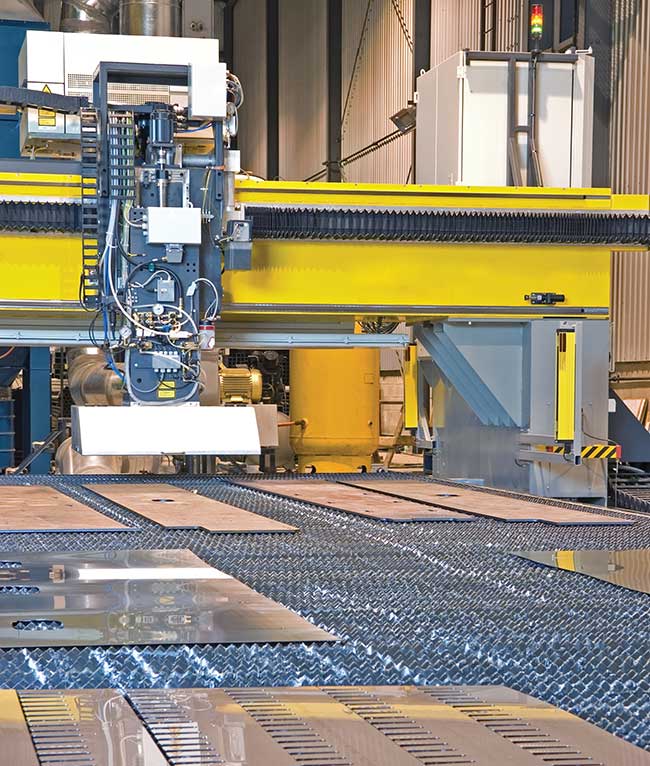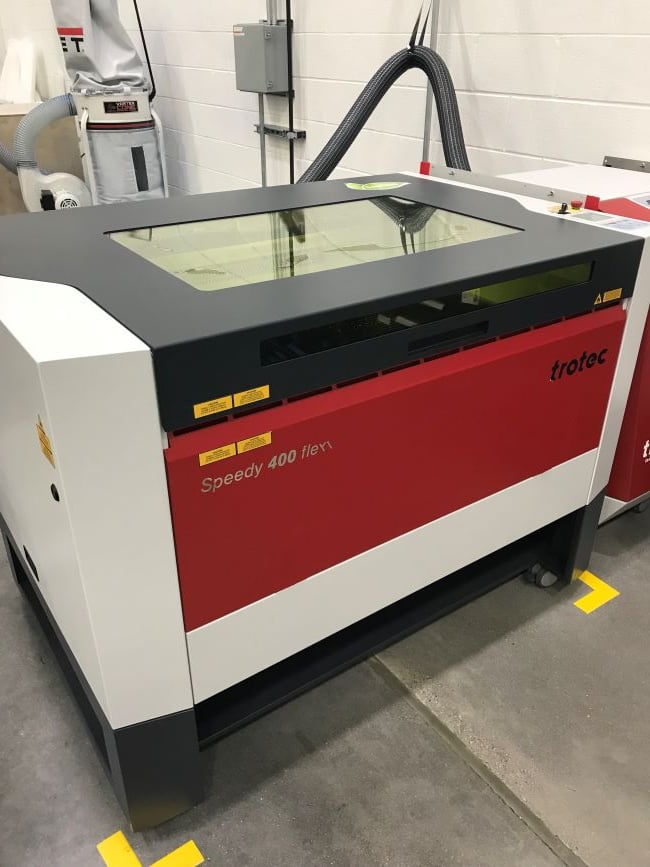Laser safety is nothing to scoff at; lasers can be hazardous. Enter Class 1 laser products — lasers that are so safe that the user doesn’t require specific laser safety training or protective eyewear. Some precautions still exist, though.
Ken Barat, Laser Safety Solutions
When purchasing an industrial laser system, the astute buyer will look for a Class 1 laser product — a system where the laser beam hazard is completely enclosed and there is no potential laser radiation exposure to the operator or anyone in the area. It does not matter what the hazard classification or laser output is, as long as the laser is contained. Think of a laser printer: It contains a Class 3B laser, but because the laser is embedded, a hazard label is not required on the outside of the product.

Class 1 systems are desirable because there is no laser hazard, which means there is no requirement or need to provide laser safety training to the operator, and no laser protective eyewear (personal protective equipment, or PPE) is required. Also, cleanliness is greater, any hot particles are contained, and medical surveillance is unnecessary (companies should know that the ANSI laser standard Z136.1 has not required baseline eye exams since the 2007 version).
In industrial settings, service or maintenance can result in removal of an enclosure or housing, or interlocks can be bypassed. At that point, exposure to Class 3B or Class 4 laser radiation is possible. There are three common scenarios when this happens: House staff may do the work, an outside vendor may come in, or a combination of both may take place, in which case the house staff conducts preventive maintenance, and vendors perform repairs.
House staff
From a laser safety perspective, in-house staff working on service and/or maintenance requires laser safety training, written standard operating procedures (SOPs) for the work and laser PPE.
Let’s not forget the need for a designated laser safety officer (LSO). This does not necessarily mean a full-time person, but someone must be responsible for ensuring that laser safety is addressed and that requirements are met. In particular, the LSO should make sure that adequate control measures have been evaluated and are put into place. Training needs to address an understanding of the laser hazard, proper use and selection of PPE, and containment measures for the activity. Just putting up a rope barrier or a sign that says “Stay away!” is not acceptable.

The most common approach is to curtain off the unit in question, creating a room-within-a-room effect. An element commonly overlooked is the training of nonservice staff on what the barrier means. This is why, even with Class 1 systems, some information in new-employee orientation or annual safety reviews on laser use and controls has value. I have often heard stories from in-house staff of people pushing back curtains or looking over them to see what is happening.
A concern with curtains on wheels is storage when they are not in use. A designated area works best, but many times the units just get scattered around the facility floor, making it a hunting exercise when they are needed.
Outside vendor
With a Class 1 system, the safety staff may not be notified when a vendor is coming onsite. Often, procurement or purchasing knows but has not notified the LSO (unless it is part of a service contract). This gap can lead to many problems. Any vendors coming onto your site need to meet your safety expectations, and the LSO therefore needs to know they are coming. In many cases, it will fall to house staff to provide signage and barriers. While each vendor is expected to bring proper laser eyewear, many times having one or two extra pairs can save the day.

The effect the vendors can have on your site’s safety cannot be overestimated. They’re looked upon as the experts with not only the unit but also its hazards. If the service person does not feel that a lock-out/tag-out procedure is required or that laser safety glasses or barriers are needed, this message might be picked up by your staff: “If the system experts don’t see a reason for eyewear, what else is unnecessary?" Vendors that have long-term warranty contracts or that have routine visits scheduled should be able to store required safety elements with you. Many firms now require outside vendors to file an “expected work activity” form prior to arriving or starting work. The form outlines the work they will be doing and expected safety steps. This not only helps in avoiding surprises but also gives the safety department a chance to review the firm’s safety knowledge.
Common control measures
Portable barriers: If you intend to block possible stray laser beams with these, you need to use certified laser curtains. They do not need to be floor-to-ceiling barriers. Curtains come in different attenuation ratings, so they are not “one size fits all.” If damaged, they need to be patched; a safety curtain with holes in it does little to instill a warm, fuzzy feeling of protection. A word of caution, many portable curtains have legs that extend out for curtain stability; these legs are a trip hazard. A new generation of curtains have a low profile base and therefore are safer.
Fixed barriers: Some places have a fixed curtain on a rail, similar to a shower curtain. While this removes the issue of “Where did I put those curtains?” it can be costly if the unit configuration gets moved.
Personnel barriers: If one decides that the barrier is not there for laser protection but rather just to keep people out, an opaque welding curtain can be used. This might be the case when the laser is on top of the unit and the likelihood of any stray reflection going downward is extremely low.
Signage: During service or maintenance, the laser notice sign should be used — but remember that all signs become invisible over time. The hope is that the blue notice sign will stand out — and even be read and obeyed — and then removed when no longer required. A sign on each curtain is not overkill.
Illuminated sign: A warning light added to the curtain can have a positive effect. Unfortunately, rotating beacons can be troublesome. An alternative is a flashing LED light at the entrance point of the curtain. I have found these preferable to other lighthouse-style lights.
Additional controls
Other barriers can be used to augment the curtain, but their values vary. Placing red danger tape around the curtained-off area has been tried, as have light curtains, pressure pads, and plastic chains on stations. All these add another layer to alert staff of the work going on, but they can become one more item to pull out and then put away. None are sufficient on their own. Local beam blocks or barriers can be very effective.
Based on the configuration of the laser system, reaching in to get to mirrors and other parts can be an ergonomic nightmare. This is extremely relevant as the in-house service staff ages. Items like platforms and other means used to reduce body contortion need to be addressed. The hope is that, over time, motorized mounts and cameras will become a more standard part of industrial laser systems.
Note to LSOs
Laser safety is important — it comprises elements of personnel safety, equipment protection, corporate liability, and image. Your laser safety approach should be able to answer the following questions:
1. Are both the worker and those in the area safe? Is the work being done in a safe manner for all concerned? Do not overlook nonbeam hazards such as electrical concerns. Many times the answer is “yes,” so we move on to the next question.
2. Does the work present the perception of risk? If there is a perception of risk or danger, it must be addressed. You do not want staff in the area thinking that they are at risk, even if they are not. If your service person is working on the system in an open area and wearing laser eyewear, why should others in the area not think they are at risk? An overlooked perception flaw exists for systems that have viewing windows so that people can observe the work process. Any such concerns need to be addressed as if there is a real risk. If concerns are just waved off, real problems may not be brought up — and you are inviting an OSHA inspection stemming from worker complaints.
3. Do you have documentation in place to prove that the work is being done safely? Are there written SOPs that have a safety component? Do they include items such as placing barriers prior to opening enclosures, communicating with others in the area and putting on eyewear? Are viewing windows labeled? The labeling of windows with their optical density and wavelength is often an overlooked item. Let’s face it: The window is equivalent to a large pair of eyewear. There should be some indication that it provides the correct level of protection — and not just in the owner’s manual. Laser protective eyewear needs to be properly labeled with optical density and wavelength coverage, and so do windows.
Another perception challenge is a “laser danger” label on many Class 1 devices. This label is put on by the manufacturer or integrator, and it represents the internal laser. It says “danger” but does not fit the normal operation conditions. I would move it to the inside or back of the unit. Telling the operator they are completely safe, but there is a bold red danger sign staring at them just sends mixed messages.
Even though laser protective eyewear should be one’s last line of defense, it seems to get the most attention — and the most misuse. If I have an Nd:YAG system (1064 nm), do I wear green-tint plastic eyewear or clear-glass eyewear? Most people go right to the green-tint eyewear, which can have as high as 60% transmission of visible light. But if the user is looking into a box and light levels are low, glass eyewear can give >90% visibility; however, glass is heavier on the face. New gray plastic lenses are available that could serve as a compromise between weight and visibility. If the user wears glasses but is not using laser eyewear with a prescription insert, the LSO is doing an injustice to the user.
Class 1 laser products allow Class 4 lasers to be placed on the manufacturing floor with no need for additional actions, but when Class 1 product integrity is violated for service or maintenance, the staff in the immediate area must be protected from potential exposure. The steps described in this article are not onerous and must not be overlooked.
"Skill of the craft" danger
"Skill of the craft" is knowledge that service staff and operators have obtained from experience working on equipment or from expected knowledge. In industrial settings, this notion has been at the center of many injuries. Simply, while skill of the craft is how expertise develops, it can also be the mindset that leads to accidents.
An incident in Idaho National Laboratory is one example. The task in this case was to service and align a 2500-W CO2 laser system. The team members assigned to the task felt that since they had worked on similar equipment, there was no need to review manuals or instructions from the manufacturers. The control system software also was not evaluated.
While positioning an alignment target, one individual placed their hand in the full beam path, resulting in second-degree burns to two fingers. Here, skill of the craft failures included a lack of understanding of the output mode of the system (control settings such as 'simmer mode') as well as failure to read the service manual.

Class 1 laser cutter
The use of lasers to cut materials has a well-established history. In recent years, a Class 1 variety of laser cutters has found use at universities, factories, and with home crafters/hobbyists due to their simplicity of use and small physical footprint. Most units provide an observation window so that the user can view the process, however, there are several safety precautions to be aware of. First, the observation window acts like large eyewear; therefore, it needs to be labeled with optical density and wavelength. If the window is ever replaced due to damage or visualization issues, a comparable filter material is needed. The operator needs to be aware of this, and not all acrylic or polycarbonate sheets are the same. A common safety violation is when the piece to be cut is too large for the unit. Some units have a pass-through setup that allows a panel to be removed, while others have enclosure housing interlocks that can be bypassed. This allows the potential for scattered laser radiation to escape. Precautions such as a portable barrier may be required to protect those in the area. The last general safety concern is fume protection and the requirement for ventilation. These systems generate some level of smoke, and the likelihood of toxic materials in this smoke is high. Therefore, where, and how the smoke is vented is very important.
Biotechnology
Class 1 products also have advantages for the biotechnology user. Some applications include gene sequencers, Raman units, cell sorters, laser scanning confocal microscopes, and atomic force microscopes. The work environments these are likely to be used in are very different than industrial settings. It is common for such units to be used in a lab setting, mixed with other equipment or in a chemistry-style lab. But the critical item is the common architectural feature of being in a room with large windows facing out into a hallway.
Therefore, once the units are opened up for service, control of stray beams and the perception of risk become more critical. If one is looking in from the hallway and sees a person wearing laser protective eyewear, that sends a signal of concern. And it is common to have more than one entry point into the space to control, so it becomes even more important for local supervisors to have a plan in place or contact the LSO for the development of controls. Once again, the service person is not going to have with them barriers or curtains for windows.
Another question to ask is, do people need access to other devices while the service is performed or can the service person have the room to themselves?
Class 1 systems, no matter the use environment, need the user to evaluate safety concerns during service.
Safety terms
The following definitions are adapted from the Code of Federal Regulations 49, part 1040:
• Accessible emission limit: the maximum accessible emission level permitted within a particular class (as set forth in the code).
• Class 1 laser product: any laser product that does not permit access during the operation to levels of laser radiation in excess of the accessible emission limits contained in the code.
• Human access: the capacity to intercept laser or collateral radiation by any part of the human body. For laser products that contain Class 3B or 4 levels of laser radiation, “human access” also means access to laser radiation that can be reflected directly by any single introduced flat surface from the interior of the product through any opening in the protective housing of the product.
• Laser product: any manufactured product or assemblage of components that constitutes, incorporates, or is intended to incorporate a laser or laser system. A laser or laser system that is intended for use as a component of an electronic product shall itself be considered a laser product.
• Maintenance: performance of those adjustments or procedures specified in user information provided by the manufacturer of the laser product that are carried out by the user for the purpose of ensuring the intended performance of the product.
• Operation: the performance of the laser product over the full range of its functions.
• Service: the performance of those procedures or adjustments described in the manufacturer’s service instructions that may affect any aspect of the product’s performance for which the code has applicable requirements.